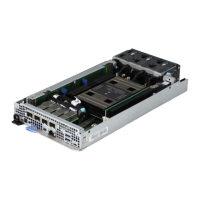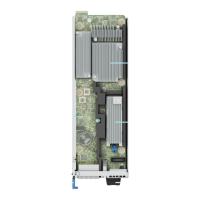still be flashed briefly for visible feedback that the system is in fact starting up. A jumper can be used to power the system
without heating.
Figure 10. iDRAC interface for Heater Manager
NOTE:
Please be advised not to rely on the heat duration data for your assessment, as this information will be excluded in
the upcoming iDRAC release.
NOTE: Refer to Table - Zone Definition and Location in next topic for Zone details
Monitoring is added in each zone to ensure that the heating pad is present. A blinking amber heater LED
(HM_SYSTEM_PH_FAULT_LED_N) indicates a problem with the heating sub‐system. This flashing LED is the only indication of
a problem because iDRAC is not yet available for problem logging. Any failure in the heating system, flashes the amber heater
status LED, and initiates a system shutdown if the temperature starts to drop below the temperature threshold. If the ambient
temperature is high enough (e.g., 10°C), then the iDRAC and shared NIC is powered to ensure that the problem is logged with
iDRAC and is available on a remote iDRAC console.
NOTE: All heater modules for XR8620t should be at point of sale.
NOTE: No APOS Cust kit for heater modules is available. The XR8620t heater module (ET) involves complex hardware
connections, including thermal/heater pad/sensors, etc. Due to this complexity, it is not easy for customers to modify the
configuration after shipment or change any M.2s connected to ROR-N1.
Troubleshooting- Heater Manager
Heater Manager Error Check Allocation
Step 1: Heater Error LED
● LED lights Green when system pre‐heating is enabled and will turn off when system pre‐heating is completed. The heater
manager will continue to maintain proper temperature on the system after preheating, but the LED will stay off while the
system is on.
● LED flashes Amber with one blink per second frequency when any required heater or thermal sensor is absent or has failed.
Step 2: Check the iDRAC Life Cycle Log:
18
Technical specifications

